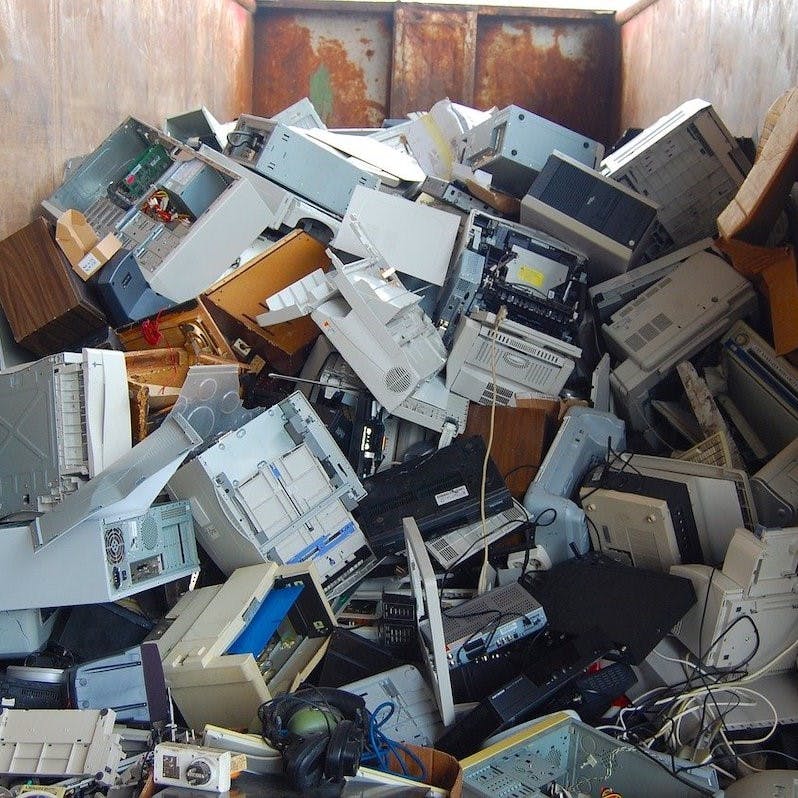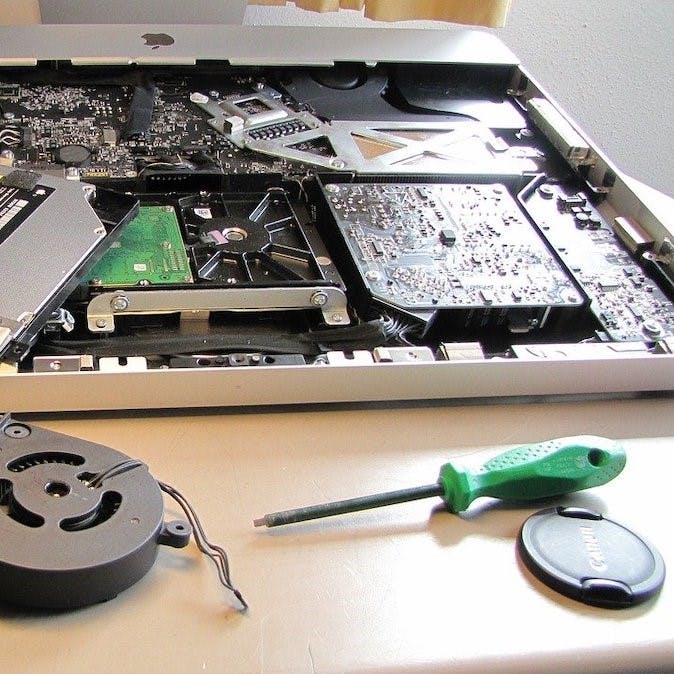
Rebecca Daniel @themarinediaries
Laptops are incredibly versatile, allowing you to work from anywhere in the world (Wi-Fi permitting) or binge on Netflix from the comfort of your bed. When was the last time you bought a new laptop? It’s likely it wasn’t more than 3 years ago, or 5 at a push. It’s estimated that 160 million new laptops are made every year, and a total of 160,000 are thrown away every day in the EU. But what is the impact of this? And how can one be sure they are buying a sustainable and ethical laptop?
Environmental impact of a laptop
Generally, when looking at the carbon footprint of a laptop, we tend to think about their energy consumption first. A laptop that is on for around 8 hours per day emits between 44-88kg of CO2 per year, but according to Lars Meiritz, the vice-president at Gartner, only 20% of the environmental impact of a laptop arises from its use. So, what about the other 80%?
It is essential to look at the whole lifecycle of a laptop when considering its environmental impact. The resource consumption, carbon emissions, pollution, and e-waste from a laptop will be determined by factors such as:
• The supply chain that brings materials to the factory
• The energy and type of materials used in manufacturing
• The manufacturing techniques used
• Delivery to the end user
• Durability and life expectancy of the laptop
• End-of-life recycling potential of the laptop

Production
Making laptops is an energy-intensive process, both from the materials used and the building of the device. The materials used in laptops consist mainly of plastic and metals. Plastic production accounts for 3.8% of global greenhouse gas emissions, nearly double that of aviation. Metals are mined all over the world; cobalt from Congo, silver from Peru, Lithium from Zimbabwe… the list goes on. Not only does land clearing for mining release carbon dioxide, but these metals need to be transported around the world to manufacturing sites. China manufactures around 70% of laptops globally, with factories typically powered by coal, which releases high amounts of carbon emissions. Add to this the carbon emissions from transporting the finished device to suppliers around the world, and the manufacture of just one laptop creates around 214 kilograms of CO2.
Most modern laptops are not sustainable as they are designed to last just a few years, and are hard to upgrade, meaning that when memory starts to fill up or the battery starts to give out, it is often easier and cheaper to buy a new model. This short life expectancy means that e-waste is one of the largest growing waste streams globally.


Take action now
Do you want to have a direct impact on climate change? Sir David Attenborough said the best thing we can do is to rewild the planet. So we run reforestation and rewilding programs across the globe to restore wild ecosystems and capture carbon.
Get involvedEthical impact of a laptop
Not only do laptops have an environmental impact, but their manufacture also creates social issues. Several of the metals used are mined in areas of conflict and almost half of the world’s cobalt comes from Congo, where children as young as seven work in mines putting them at risk of lung damage and causing skin conditions. Factory workers manufacturing laptops are submitted to ‘prison-like’ conditions. Even e-waste, typically shipped to developing countries, puts waste ‘pickers’ in harm’s way.

The most sustainable solution for a laptop is taking care of the one you have.
Rebecca Daniel
A sustainable laptop is in the upcycling
Despite newer laptops having higher energy efficiency and lower embodied carbon emissions, you’d be mistaken to think the most sustainable option would be to trade in your old laptop for a new one. An estimated 70% of laptops can be reused, and surprisingly if a new laptop is 10% more energy efficient than your old one, the emissions from its production, distribution, and disposal would take decades to recoup.
So, the most sustainable solution for a laptop: take care of the one you have, and repair it when needed. Components like batteries, RAM and storage can be upgraded easily, but other parts are slightly harder to replace – we’d recommend contacting the brand to check options and costs.

Buying a sustainable laptop
Refurbished
You can easily find refurbished or renewed laptops online, which often come with a new warranty.
New
Simply replacing a laptop with a new model means many of the environmental costs mentioned at the start of this article are incurred again. Even a super energy efficient model will only deliver a limited reduction in its carbon footprint over its whole life cycle.
But, if you really do need to buy a new model, look out for:
- Energy efficiency – reducing the energy needed to manufacture and use the laptop
- Materials innovation – minimising the use of materials, especially harmful materials
- Designed for upgrade and recycling – laptops that can have more memory or a larger hard disc added
Circular computing produce the world’s first remanufactured sustainable carbon-neutral laptops. A study by Cranfield University has shown that remanufactured HP, Lenovo, and Dell laptops all performed at 93-97% of the levels of a new computer from the same brands.
Check out the Ethical Consumer comparison table for ethical laptops, PC’s, and tablets, and find out more about the issues associated with laptops here. Or with HP you can calculate the carbon footprint of your laptop before purchase.
If you have found these tips on sourcing a sustainable and ethical laptop guide useful, we also recommend our Sustainable Smartphones guide.


Sources & further reading

- “Our commitment to sustainable IT” - Circular Computing
- “Shipment forecast of tablets, laptops and desktop PCs worldwide from 2010 to 2023” - Statista
 Turn on power management to reduce energy use
Turn on power management to reduce energy use